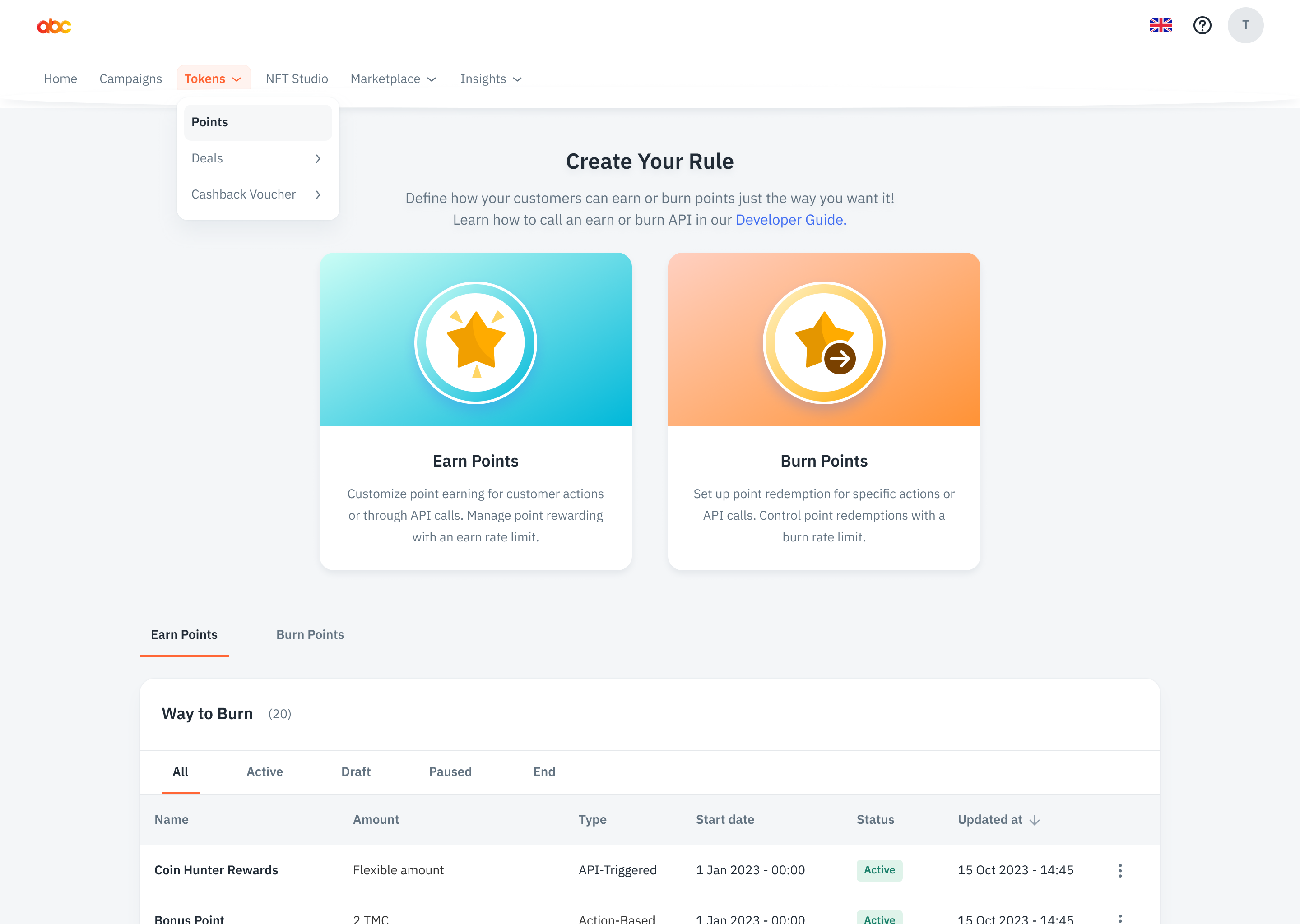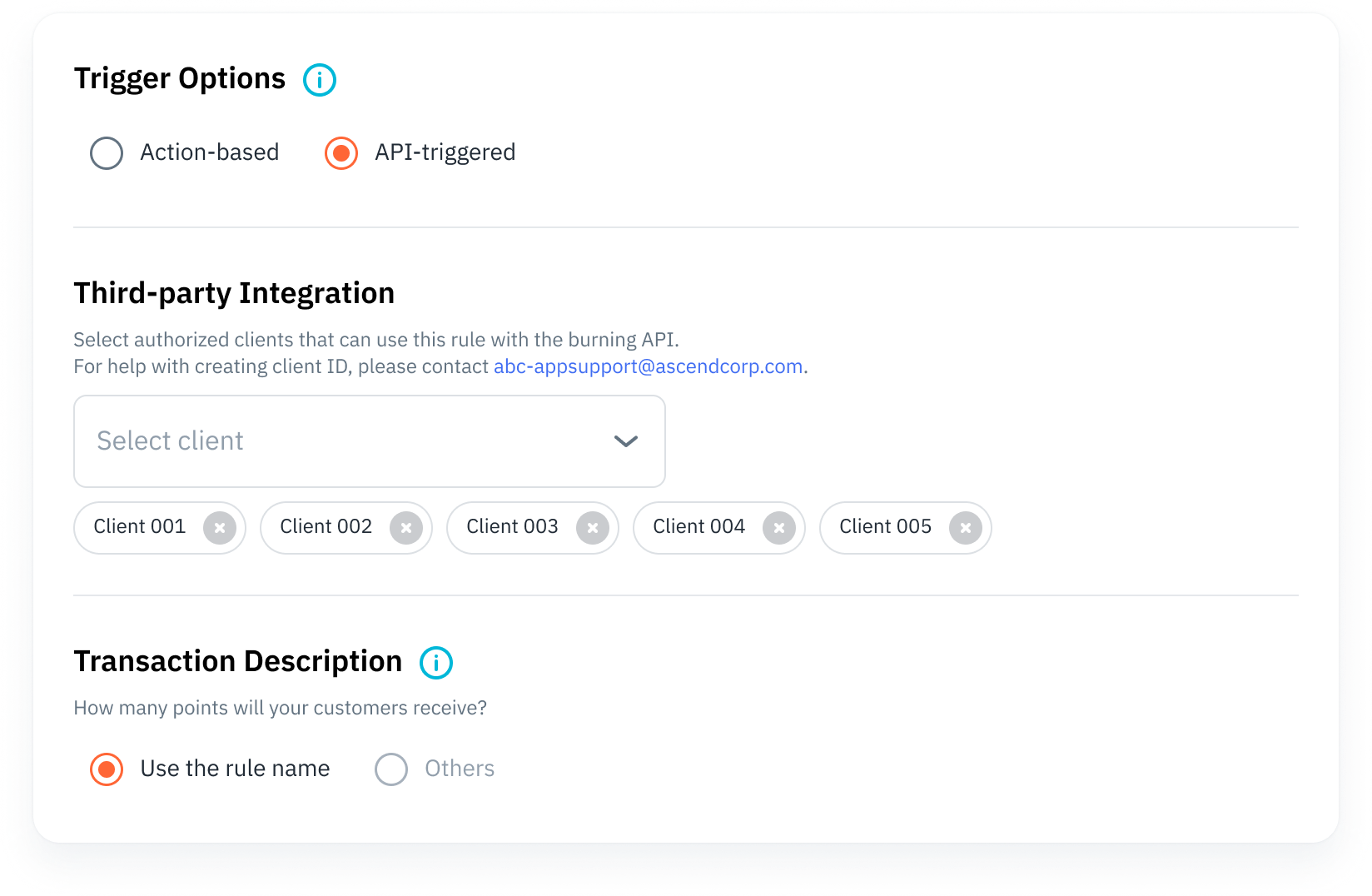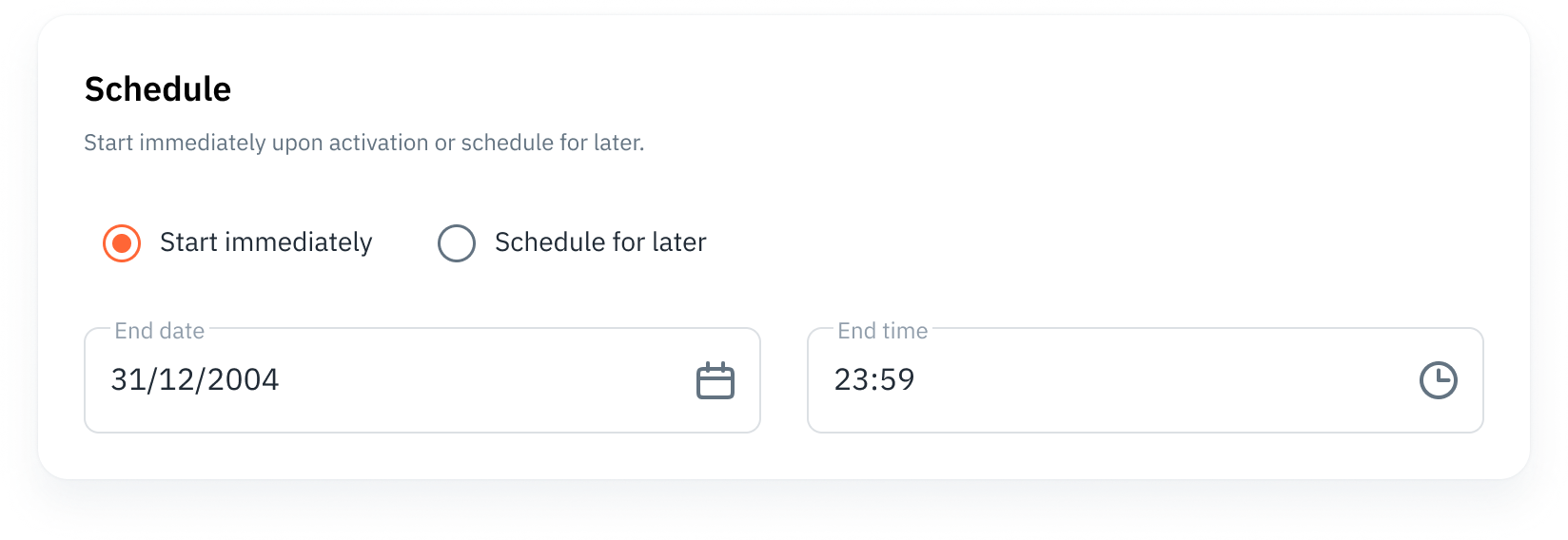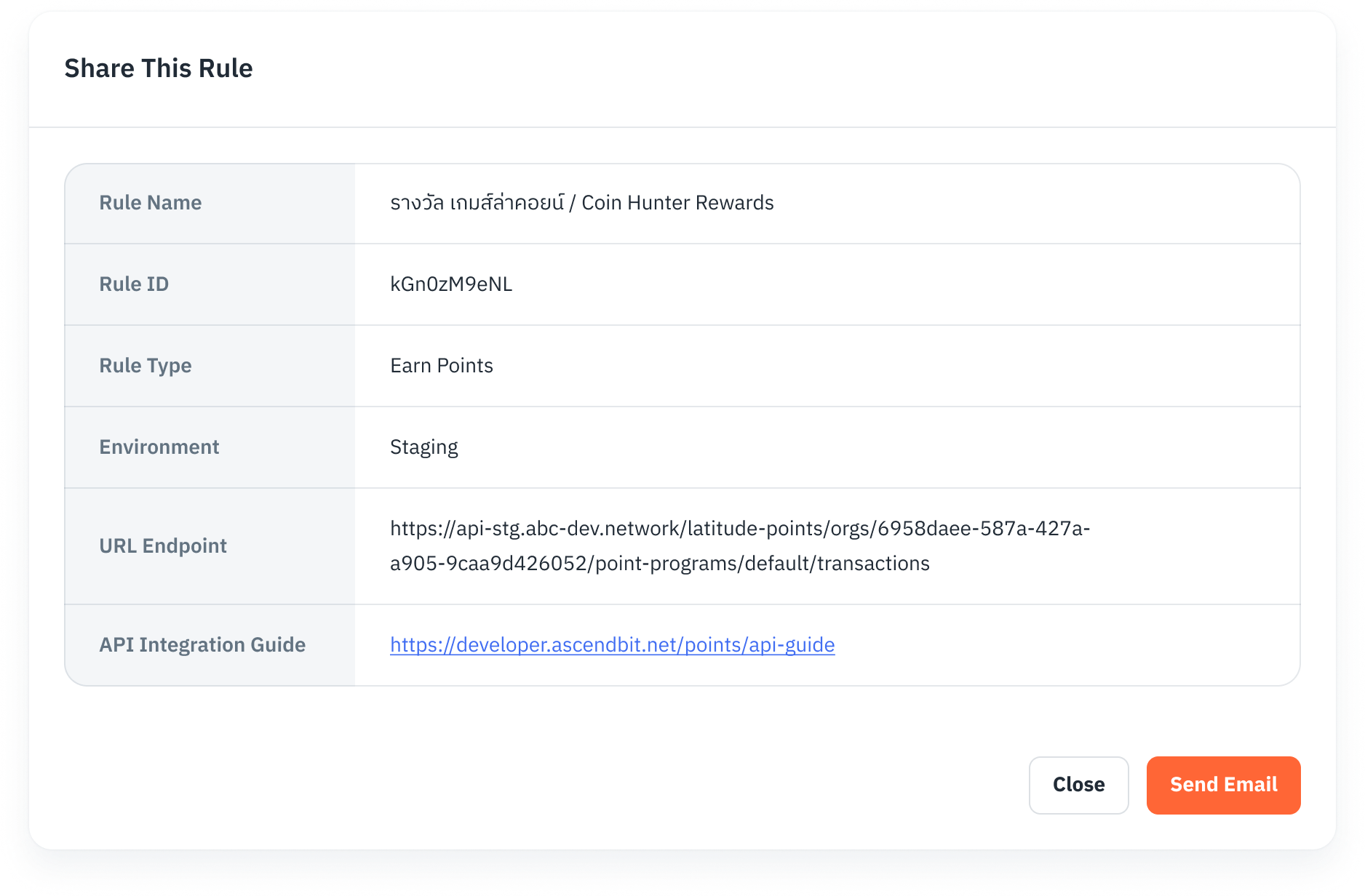API-Triggered Rules
This guideline outlines the steps for business users to share earning or redemption rule IDs with third-party developers. These rules enable developers to trigger specific actions through the API, enhancing the functionality of your platform.
We suggest creating the rule for testing and debugging the integration in the staging environment before promoting it to the production environment for live usage.
Getting Started
Here's a simplified overview of how the integration works:
Access Business Console
Navigate to your business console and locate the point menu.

Create Rule with API-Trigger Option

- Create an earning or redemption rule with the API-trigger option enabled. This allows developers to trigger the rule programmatically.
- Choose authorized clients that can trigger this rule with the API.
- If you need assistance in creating a client ID, contact [email protected]. Our support team will promptly assist you.
Set Cap Max (Optional)
Optionally, set the maximum cap amount for the rule if required.

Define Start and End Dates
Specify the start and end dates for the rule to determine its validity period.

Save Rule
Review all details and configurations before saving the rule. Once satisfied, click the save button to finalize.
Activate Rule with Caution
Review everything carefully before activating the rule to ensure it functions as intended.

Sharing Rule ID:

- Once activated, locate the rule and click the kebab icon (three vertical dots) associated with it.
- From the options menu, select "Share Rule ID." This action will copy the rule ID to your clipboard, making it ready for sharing.
Send Information:
Here is the essential information for your third-party developers. Click the "Send Email" button to include this information in your email.

- Rule Name: [Name of the rule]
- Rule ID: [Rule ID]
- Rule Type: [Earn Points / Redeem Points]
- Environment: [Staging / Production]
- URL Endpoint: [URL endpoint for the environment]
- API Integration Guide: Share this link, API Integration Guide, with your developer.
For security reasons, we recommend sending the client ID and client secret separately.